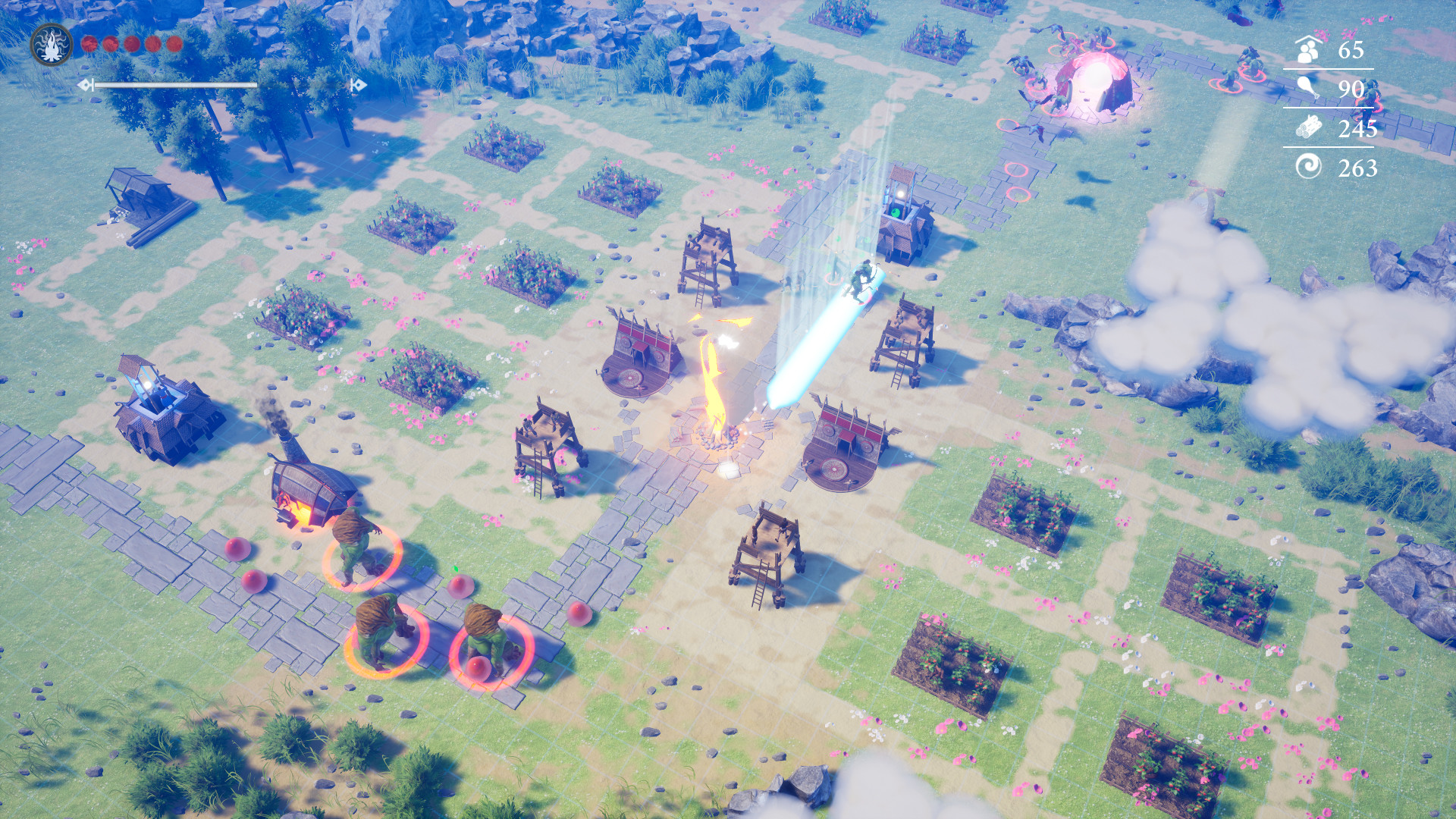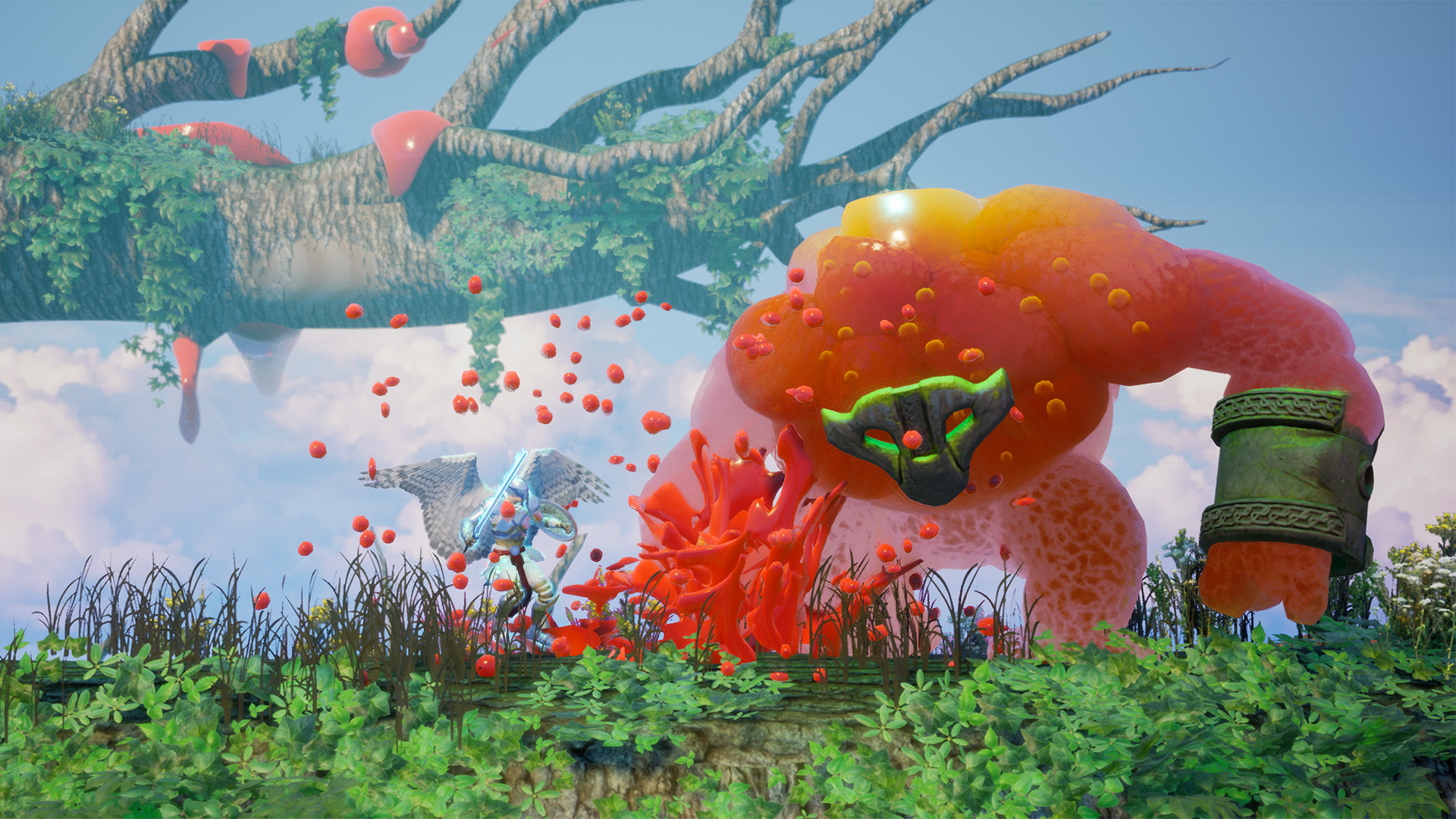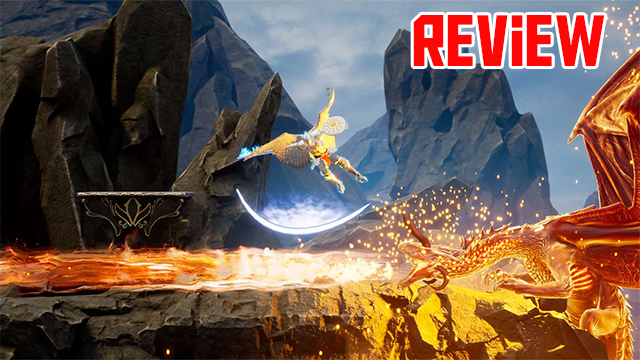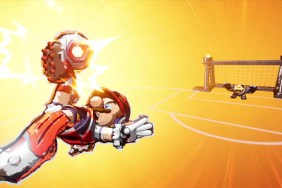A lot of indie games have found success in being a spiritual successor to a game that players fondly remember. From Yooka-Laylee to the recently released Bloodstained: Ritual of the Night, there are no shortage of examples to choose from. Now it is eccentric developer ACE Team’s turn at doing so, and it fittingly decided to create a new ActRaiser title. Even down to how the team formatted its title, SOLSERAPH isn’t afraid to show its inspiration on its sleeve despite its inability to meaningfully push forward.
SolSeraph is much more in the vein of the 1990 Super Nintendo game than its inferior sequel, as the core gameplay loop is split between two different genres. First is a 2D action game that has the player going through mobs of goblins, archers, blobs and other types of fantasy foes. This is supplemented by light real-time strategy sections where players attempt to save the village they watch over from waves of the same enemy types. The key is to alternate between the two so they can eventually defeat the boss of the area and stop the monsters from spawning and terrorizing the area.
The 2D platforming sections control a lot like the classic Castlevania games of yesteryear. Combat is stiff, movement is often sloppy and stilted, and it’s far too easy to jump into an enemy you were trying to leap near. This is probably SolSeraph‘s biggest weakness as these shortcomings make combat rough around the edges. A few later power-ups help make it more interesting, but you’re mostly just slashing foes that go down in a hit or two or using magic attacks (you start off with a limited supply of arrows). It can also be unfair in spots because of enemy archers hitting the players with arrows off-screen. It definitely feels like a game from 1990, but dated rather than a nostalgic way.
SolSeraph Review | A tale of two genres

Thankfully, the tower defense sections are a lot more solid, although it’s still a bit hampered by the genre split. There are some control issues if you’re using a controller to play as it can be oddly slow to maneuver around the world (which you’ll want to do often as enemies are coming from different directions). However, the 2D action feels a lot better with a controller than a keyboard and mouse. So, players ultimately either need to constantly switch between inputs or just suck it up. It’s far from unplayable but it’s indicative of the game’s biggest issue which is that it doesn’t offer either a great RTS or action game. It’s merely fine in both regards and that split is still novel, but it’s been done before.
Players take the role as a god named Helios and this manifests in a few interesting ways during the strategy sections. The character has different weather abilities he can summon, be it making it rain to make ground fertile for farming or using lightning strikes to aid the villagers in fending off enemies. There’s a limited amount of actions he can do in a single turn, so these have to be used with care, but it’s by and far the most interesting aspect of it. It’s the unique elements that make this a journey worth going on even if frustrating elements are bound to pop up every 10 minutes or so.
The game’s story, is one unexpected highlight as it has the player peaking into several different villages and learning how they view the gods. Written by Jonas Kyrazes, who is best known for his work on The Talos Principle, it’s a surprisingly introspective look at religion and the power it can hold. However, all of the narrative is a side to the main action as it just happens as pop-up text boxes while the strategy portions go on. It’d be more effective if you actually saw what was going on and got to know the characters more, but as something that is off to the side, it’s pretty gripping.
SolSeraph Review | Jack of all trades, master of none

One of the most frustrating elements is how hit or miss the boss fights can be due to how the combat feels. Sometimes ACE Team expects more precise mobility from the player than they can realistically get with the clunky controls and that can lead to some frustrating deaths. Due to the infrequent checkpointing, a death can mean that the player has to run through an entire level again just to get another shot at the boss that killed them. This makes learning boss patterns into a real pain rather than an interesting challenge to overcome. It also encourages sloppy play as players attempt to get back to where they were quickly, which leads to more deaths and frustration.
There is no innovation to be had here and this is really just a straightforward adaptation of ActRaiser. That isn’t a bad thing per se, and it would work great if both halves of the gameplay were polished and fun to do. However, neither gameplay is great and the combat can be more frustrating than enjoyable. It’s held back in a way due to its inspirations as ACE Team, for all of their great qualities and wacky ideas, have never been a developer that creates a heavily polished title. There is a lot of untapped potential here and it’s too bad that the developer didn’t insert more of themselves into it rather than just paying homage to one of their favorite games of the 90s.
In the end, SolSeraph‘s greatest strength is that it’s essentially a new ActRaiser game in 2019 and there is no other game quite like it currently on the market. If that’s enough to grab your interest, then you’ll have a good time with ACE Team’s latest title. However, if you lack the nostalgia for Quintet’s 1990 Super Nintendo game then you will be left with a clunky genre hybrid that feels as dated as the game it is based upon at times. There is no real evolution of the formula going on here, and that is a pretty disappointing aspect considering how far other genres have come in the past 30 years.
GameRevolution reviewed SolSeraph on PC with a copy provided by the publisher.
-
Nobody else is making a new ActRaiser game.
-
God abilities are really fun.
-
Intriguing narrative, even if it's on the side.
-
Combat is SNES-level clunky in the wrong ways.
-
Not very innovative.
-
No optimal way to control the game.










